
Volume
1036
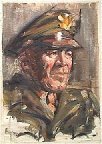
|
From Tarzana, California
Memories from the
Danton Burroughs
Family Archive
|
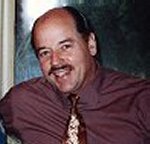
|
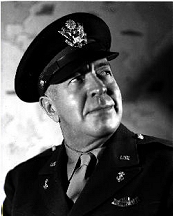
|
Edgar Rice Burroughs
Oldest Correspondent in the WWII Pacific
Theatre
An Illustrated Time Line of
Events
1943: The War Years
Collated from ERB's Personal
Wartime Journals
and Illustrated by Bill Hillman
|
Wartime
Journals of Correspondent Edgar Rice Burroughs :: December 1942-April 1943
DIARY OF A CONFUSED OLD MAN
or Buck Burroughs Rides Again

Featured here is a timeline summary of ERB's 60-page
Wartime Journal
with added photos compiled by Bill Hillman
The entire actual journal pages are featured at:
www.erbzine.com/mag68/6800.html
1943 ERBzine 1036
* Sol Lesser resumed production
of the Tarzan films with
Tarzan Triumphs and Tarzan's Desert
Mystery at RKO. Johnny Weissmuller starred.
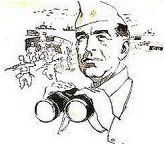
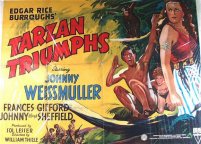
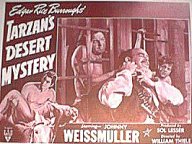 Early: ERB wrote the article, "What Are We Going to Do about
it?" in which he expressed doubts over the loyalty of the thousands
of Japanese on the Islands. By fall he regretted some of these comments
and prepared to write another article.
Early: ERB wrote the article, "What Are We Going to Do about
it?" in which he expressed doubts over the loyalty of the thousands
of Japanese on the Islands. By fall he regretted some of these comments
and prepared to write another article.
January 1: Ed breakfasted with correspondents and three refugees
from the Dutch East Indies and Malaya.
January 3: Ham and Ed walked through and marvelled at the
unusual flora of the Botanical Gardens. Ed noted that many of the plants
would serve well as models for Jack's Inner World and Martian landscapes.
Ed took the train for an afternoon VIP party at the home of wealthy cattleman,
Field, in Pymble. He was back in time for a late supper at Ciro's night
club run by Harry Gould of San Francisco.
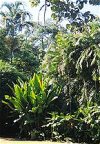
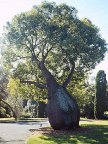
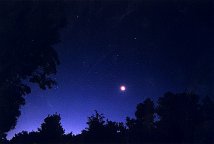
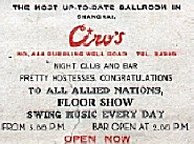 January 4: A radio magazine took photos of Ed and Harnett
from the Broadcasting Station 2SM. The Bank of Australasia released impounded
royalty funds of $3000. Ed took out cash and bought a warmer uniform. The
RKO rep and "Film Weekly" magazine took publicity photos.
January 4: A radio magazine took photos of Ed and Harnett
from the Broadcasting Station 2SM. The Bank of Australasia released impounded
royalty funds of $3000. Ed took out cash and bought a warmer uniform. The
RKO rep and "Film Weekly" magazine took publicity photos.
January 5: Ed attended a special screening of Tarzan's
New York Adventure (final MGM Lesser picture) as guest of the MGM
Sydney Studio and did an interview with the MGM News Service. He noted
that many of Sydney's streets appeared to be right out of the 1890s. The
Fields take Ed to Prinee's, a swank restaurant where he is shocked to see
so many young men in civilian clothes.

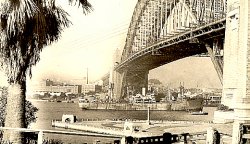 January 6: Ed made a recording for MGM News Service - script
by Saide Parker, met with UP Sydney Bureau Chief, and recorded a
talk for an Australian Broadcasting Commission children's hour. He then
went shopping and visited a financial counting room right out of Dickens.
January 6: Ed made a recording for MGM News Service - script
by Saide Parker, met with UP Sydney Bureau Chief, and recorded a
talk for an Australian Broadcasting Commission children's hour. He then
went shopping and visited a financial counting room right out of Dickens.
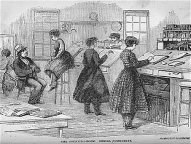 January 7: Ed purchased $3475.00 worth of US War Bonds for ERB,
Inc. from a US army representative - a Tarzan fan as were most of the people
he met in the Pacific. He then viewed a classified film of Rickenbaker
at Kodak and saw Hulbert's friend Shelton in some of the scenes. He returned
to the hotel to pack for next day's departure for New Caledonia. He had
promised the Noumea Chowder and Marching Club a case of scotch but had
been able to find only three bottles.
January 7: Ed purchased $3475.00 worth of US War Bonds for ERB,
Inc. from a US army representative - a Tarzan fan as were most of the people
he met in the Pacific. He then viewed a classified film of Rickenbaker
at Kodak and saw Hulbert's friend Shelton in some of the scenes. He returned
to the hotel to pack for next day's departure for New Caledonia. He had
promised the Noumea Chowder and Marching Club a case of scotch but had
been able to find only three bottles.
 January 8: Military flights out of Mascot Field were cancelled
because of a hurricane approaching New Caledonia so Ed checked back into
Usher's. RKO made plans for another recording to promote the next Tarzan
film release.
January 8: Military flights out of Mascot Field were cancelled
because of a hurricane approaching New Caledonia so Ed checked back into
Usher's. RKO made plans for another recording to promote the next Tarzan
film release.
January 9: Ed pulled out the remainder of his Australian
account in $118.50 US currency (exchange $3.26 per L). He then took
a tram to catch the 11:15 ferry for Taronga Park Zoo to see the koala bears
-- total cost of trip was 15 cents. He ended the day with by dining on
oysters and lobster at Romano's.
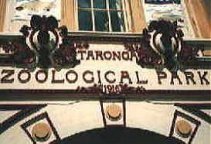
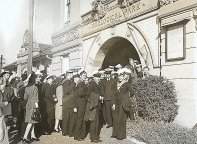
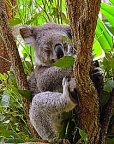
From the Hillman
HMCS Prince Robert Site
January 10 (Sunday): He took a 5:30 A.M. military
bus to Mascot Field where 21 Marine Corps transport planes were waiting.
Ham and Ed were the only passengers on the "Chuggar", a C-47 (DC-3) that
took off at 8 with no freight. The trip was rough and cold, with boredom
relieved only by sandwiches, a murder mystery book and the occasional smoke
in the pilot's compartment. The end of journey was stressful as the navigator
almost missed finding the island. Ed noted that the aircraft consumed 85
gallons per hour -- equivalent to an eight and a half month gas ration
in Honolulu. They landed at Tontouta at 4:00 P.M. and rode through the
rain to Noumea in the back of an army truck. The homecoming welcome at
the Grand Hotel du Pacifique was a warm one and the Noumea Chowder and
Marching Club soon got together again.
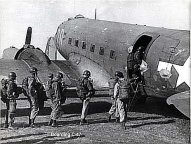
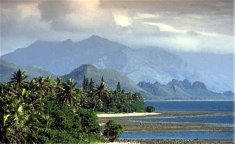
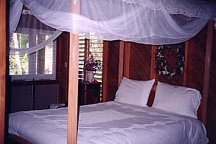 January 11: Ed picked up a jeep at the Base Motor Pool and drove
out to Dumbea Valley to do a story on a Pack Artillery outfit, the 97th
F.A.Bn.
January 11: Ed picked up a jeep at the Base Motor Pool and drove
out to Dumbea Valley to do a story on a Pack Artillery outfit, the 97th
F.A.Bn.
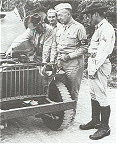 January 12: He finished story No. 16 and attended a press conference
held by General Harmon at 3 P.M. Correspondents all expressed frustration
with the Navy over the CINPAC order barring all correspondents from air
transportation. Dick Tregaskis appealed to Admiral Halsey without success.
January 12: He finished story No. 16 and attended a press conference
held by General Harmon at 3 P.M. Correspondents all expressed frustration
with the Navy over the CINPAC order barring all correspondents from air
transportation. Dick Tregaskis appealed to Admiral Halsey without success.
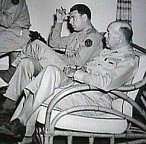
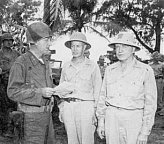 January 13: Ed picked up Signal Corps photographer, Cpl. Wold,
and reached the HQ of the 97th F.A.Bn. in time for breakfast. He gave a
talk to the men and then watched them break down 75mm guns and pack them
onto mules. Ed was issued a horse and rode along with the battery mule
team over steep mountain trails through niaouli forests overlooking the
Coral Sea.
January 13: Ed picked up Signal Corps photographer, Cpl. Wold,
and reached the HQ of the 97th F.A.Bn. in time for breakfast. He gave a
talk to the men and then watched them break down 75mm guns and pack them
onto mules. Ed was issued a horse and rode along with the battery mule
team over steep mountain trails through niaouli forests overlooking the
Coral Sea.
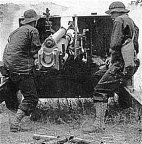
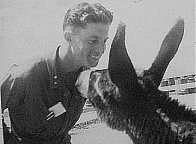
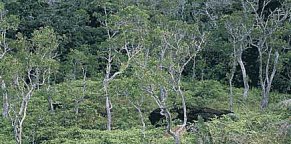
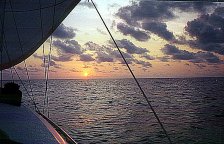 January 14: Ed and Lt. Ramsey drove to the 1st Parachute Bn of
the Marine Corps, thirty miles from Noumea, to arrange for a story and
photos next day.
January 14: Ed and Lt. Ramsey drove to the 1st Parachute Bn of
the Marine Corps, thirty miles from Noumea, to arrange for a story and
photos next day.
January 15: Ed and photographer, Sgt. Corson, went up with
the first early morning parachute training flight and observed 12 tense
trainees make their jumps. He almost fell out of the plane's open door
-- without a parachute. After landing they drove "Bouncing Baby" out to
the parachute range to get pictures of the third flight jump.
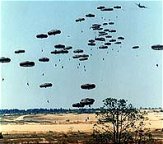
 January 16: Ed took another request for air transportation to
Guadalcanal to Colonel Sherman. In the evening he declined an invitation
to a dance party put on by the enlisted men but watched from his overlooking
balcony.
January 16: Ed took another request for air transportation to
Guadalcanal to Colonel Sherman. In the evening he declined an invitation
to a dance party put on by the enlisted men but watched from his overlooking
balcony.
 January 17: He met photographer Jack Rice who had seen Hulbert
two weeks before.
January 17: He met photographer Jack Rice who had seen Hulbert
two weeks before.
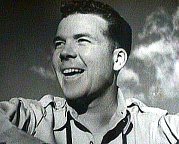
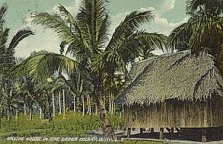
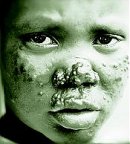 January 18: Ed was awarded a new rank, "Assimilated 2nd
Lieutenant". He met Commander Sherman Everett Burroughs, Jr. USN, after
which he drove to the top of a promontory at the north entrance to Noumea
harbour. This location offered a beautiful view of the area and an opportunity
to explore an old abandoned French fort with its battery of guns made in
1850. Gazing around the countryside below he marvelled at the buildings,
hospitals, air fields and road network that the US military had built on
this French colonial island. In the inner harbour, protected by a
submarine net, lay battleships, flat tops, cruisers, destroyers and merchantmen.
On the way back to the hotel he passed a well-kept leper colony for natives
with its barracks, hospital buildings and elaborate church. Beside the
road he was shocked to see a young patient partially rotted away.
January 18: Ed was awarded a new rank, "Assimilated 2nd
Lieutenant". He met Commander Sherman Everett Burroughs, Jr. USN, after
which he drove to the top of a promontory at the north entrance to Noumea
harbour. This location offered a beautiful view of the area and an opportunity
to explore an old abandoned French fort with its battery of guns made in
1850. Gazing around the countryside below he marvelled at the buildings,
hospitals, air fields and road network that the US military had built on
this French colonial island. In the inner harbour, protected by a
submarine net, lay battleships, flat tops, cruisers, destroyers and merchantmen.
On the way back to the hotel he passed a well-kept leper colony for natives
with its barracks, hospital buildings and elaborate church. Beside the
road he was shocked to see a young patient partially rotted away.
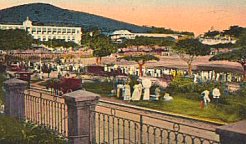
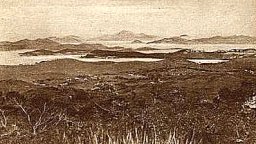
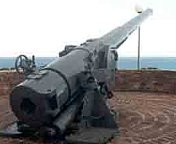
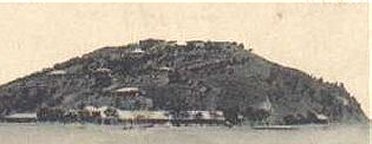
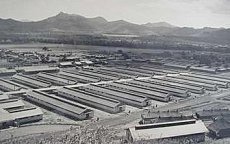 January 19 - March 19: ERB wrote Diary #2.
January 19 - March 19: ERB wrote Diary #2.
January 19: On his way to Tontoura for a story from Commander
Burroughs at the Carrier camp, he picked up a filthy Fighting French courier
with mail sack, two CBs and two coloured men from an Engineer Corps unit.
He messed with Burroughs and several officers of his command, Air Group
3 of Aircraft Carrier Saratoga which was docked at Noumea. On the way back
to the hotel he picked up a Javanese woman with baby and a boy with dog.
Back in his room he discovered cause of an itch that had annoyed him all
day: spider bite welts across his back. He believed that his health started
to decline from this point on and that he was affected by this poison for
the rest of his life. He later learned the island tap water he had been
drinking had not been chlorinated, but he suffered no apparent affects
from this.
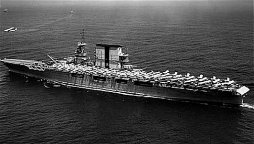
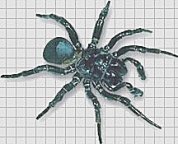 January 20: Ed reported the "Bouncing Baby" jeep stolen -- "one
of the major outdoor sports on the island." He hitched a ride to the post
office to mail off a story and then over to the hospital for spider bite
treatment. While there he got stories from some of the 521 Guadalcanal
casualties who had just been brought in by ship.
January 20: Ed reported the "Bouncing Baby" jeep stolen -- "one
of the major outdoor sports on the island." He hitched a ride to the post
office to mail off a story and then over to the hospital for spider bite
treatment. While there he got stories from some of the 521 Guadalcanal
casualties who had just been brought in by ship.
January 21: He walked to the Signal Corps Photo Lab
to get the Pack Artillery blow-ups and returned to find that Bouncing Baby
had been returned. COMSOPAC promised to set up an interview for him with
Jap war prisoners.
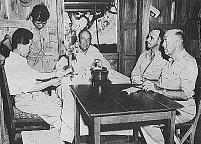 January 22: Ed learned that one of the new pilots he had flown
in with on December 5th had been killed in a crash on the island without
seeing combat. Ed made the long drive through mountains, swamp and jungle
to the lower end of the island to get a story at the American
Red Cross Officers' Rest Area. He picked up six CBs along the way.
The Red Cross Area was disappointing, inhabited by only a Frenchman and
a donkey. On the return drive along the bay and seashore he speculated
on how much more the Americans had done for the island than the French
who had left little in return for the enormous weath they had taken out.
"It is a monument to the absolute low in colonization." Back at the hotel
he had supper with Lt.
Cmdr. John D. Bulkeley, hero of They
Were Expendable.
January 22: Ed learned that one of the new pilots he had flown
in with on December 5th had been killed in a crash on the island without
seeing combat. Ed made the long drive through mountains, swamp and jungle
to the lower end of the island to get a story at the American
Red Cross Officers' Rest Area. He picked up six CBs along the way.
The Red Cross Area was disappointing, inhabited by only a Frenchman and
a donkey. On the return drive along the bay and seashore he speculated
on how much more the Americans had done for the island than the French
who had left little in return for the enormous weath they had taken out.
"It is a monument to the absolute low in colonization." Back at the hotel
he had supper with Lt.
Cmdr. John D. Bulkeley, hero of They
Were Expendable.
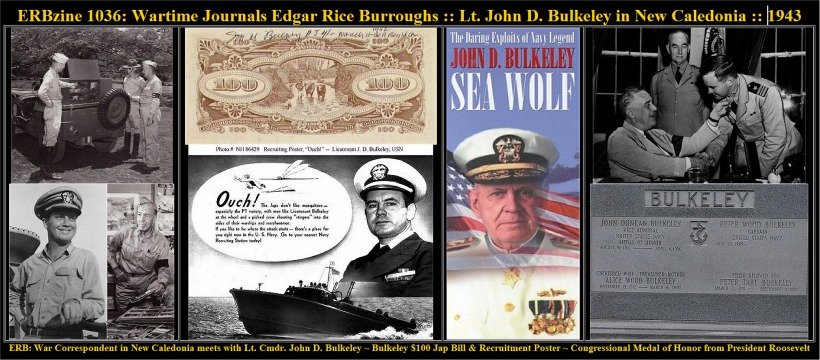
January 23: He returned to the hospital for sulfadiazine tablets
and got permission to interview casualties and examine records showing
causes of disability. "Tales of courage, of loyalty, of miracles. Tales
of the cunning, the ruthlessness, the fanaticism of the Japs. These I heard
that day from men recently wounded by gunfire or shrapnel on the jungle
front, as I sat beside their hospital beds. . . . without exception they
gave the 'Pill Rollers' (Medical Corps) credit for the highest courage
and indefatigable performance of duty under fire." Ed spent the evening
with Pat Frank, OWI, who had been with the BMTC in Honolulu.
January 24: Ed and Frank went to Isle Nou, formerly a French
penal colony dating back to 1864. Around 100 "old white derelects" -
former inmates - still resided on the island. Ed waxed nostalgically over
seeing the USS Argonne and the liner Lurline in the harbour
-- ships he had spent time on in the past. He was treated royally by the
Lurline
crew who remembered him from past voyages.
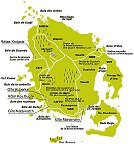
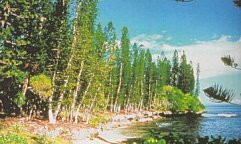
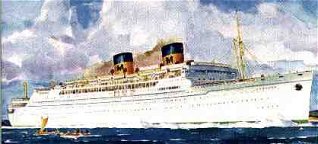
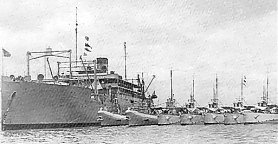 January 25: He interviewed Major General Rush B. Lincoln and
drove out to Little Old New York for a tour of the 754th Tank Bn. camp.
January 25: He interviewed Major General Rush B. Lincoln and
drove out to Little Old New York for a tour of the 754th Tank Bn. camp.
January 26: He went to QM to pick up leggins, raincoat and
head net and returned to Little Old New York where he rode a tank and fired
its 37mm gun. He dined with the officers of B Co. and later marvelled at
the primitiveness of the native-built buildings on the post, and especially
the camp latrine: "It was in an open tent facing a main path and only a
few feet from it. It was a two holer, and had recently been on fire. One
hole was only a cinder. The supports seemed to have been burned out, and
one expected to crash down into the sink at any moment. It had one advantage.
No one ever lingered there unnecessarily."
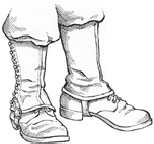
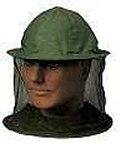
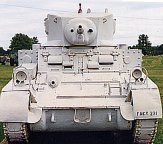 January 27: Ed had stayed overnight at the camp to go out on
reconnaisance the next morning. He joined a caravan of 17 tanks accompanied
by back-up vehicles. The column moved into a forest of naiouli trees where
the tanks formed a large protective circle. They were to bivouac here for
the night so the men camouflaged the tanks with branches and each person
dug a slit trench, set up a cot and hung mosquitoa bar - all done in the
rain. Ed made notes on everything, including the goings on at the kitchen
truck and mess tents.
January 27: Ed had stayed overnight at the camp to go out on
reconnaisance the next morning. He joined a caravan of 17 tanks accompanied
by back-up vehicles. The column moved into a forest of naiouli trees where
the tanks formed a large protective circle. They were to bivouac here for
the night so the men camouflaged the tanks with branches and each person
dug a slit trench, set up a cot and hung mosquitoa bar - all done in the
rain. Ed made notes on everything, including the goings on at the kitchen
truck and mess tents.

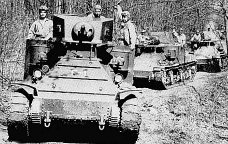
 January 28: The camp breakfasted at 4:00 A.M. and then filled
the slit trenches, packed gear and moved out. After observing the tank
maneuvers taking place over all types of terrain and vegetation, Ed returned
to camp and drove back to Noumea.
January 28: The camp breakfasted at 4:00 A.M. and then filled
the slit trenches, packed gear and moved out. After observing the tank
maneuvers taking place over all types of terrain and vegetation, Ed returned
to camp and drove back to Noumea.
January 29: Ed was given a supply of mystery stories
and LIFE magazines from friends.
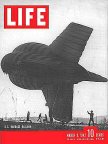

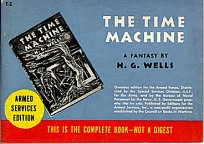
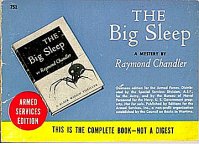
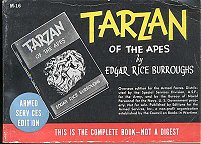 January 30: Permission was given to sail out on the USS
Shaw. Ed packed, took a five mile boat ride out to where the ship was
anchored on tossing seas, climbed a sea ladder with his gear and went through
the protocol of boarding a naval vessel. He was invited to bunk with the
Executive Officer and to dine at the Captain's table.
January 30: Permission was given to sail out on the USS
Shaw. Ed packed, took a five mile boat ride out to where the ship was
anchored on tossing seas, climbed a sea ladder with his gear and went through
the protocol of boarding a naval vessel. He was invited to bunk with the
Executive Officer and to dine at the Captain's table.
January 31 (Sunday): At 6:00 A.M. the Shaw sailed
through the narrow opening in the reef, past Emedee Light and Tabu Rock
on starboard and out into the Coral Sea. Awhile back, coming in from fighting
around the Solomons, the Battle of Santa Cruz Islands and naval battles
around Guadalcanal, the Shaw had missed the channel and had run aground
on the coral reef. Orders were to abandon the ship but the crew lightened
the vessel enough to float her off and to make temporary repairs - filling
gigantic holes in the hull with concrete. It was aboard this wreck that
Ed made the slow, zig-zag voyage back to Pearl, accompanied by the USS
McKean.
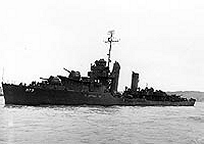
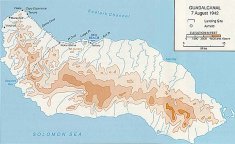
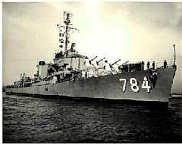 February: "Skeleton
Men of Jupiter" appeared in Amazing Stories ($400).
February: "Skeleton
Men of Jupiter" appeared in Amazing Stories ($400).
February 1: The Shaw went through the first of the daily
early morning battle stations alerts against sub attack. A few days later
at this time Ed would be stranded below in pajamas. He had tried to take
a shower while the crew were at battle stations but all doors and hatches
had closed on him and water had been shut off. After his eventual rescue
he had to parade past most of the crew in his pajamas to get back to his
cabin. Ed spent much of the 5000 mile voyage on the bridge trying to spot
something of interest on the endless ocean.
February 2: Ed's bunkmate, Lt. Croft, gave him a tour of
the ship. He was amazed at how sailors from such diverse backgrounds and
ethnic groups got along so well in such dark, cramped, and hot surroundings.
He was also impressed with the huge stock of good food in the ship's three
large refrigerating compartments. The Navy ate very well. Much of the crew
was seasick but Ed had the stomach of an old salt.
February 3: At 8:41 A.M., the Shaw dropped anchor in the
harbour at Suva, capital of Fiji on the island of Viti Levu. Natives paddled
out with fruit, gifts and trade goods. Ed bought a war club for grandson,
Mike. The Shaw tied up alongside the McKean and the crew was given shore
leave. Captain Biggs, Lt. Croft and Ed walked through town, past Government
House where a hundred Britishers were playing cricket in the hot sun, and
on to the scenic Grand Pacific Hotel for highballs. They then went shopping,
washed up at the ship, visited the Fiji Club and eventually made it back
for supper at the hotel.
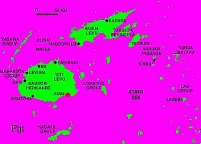
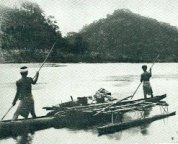
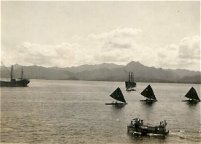
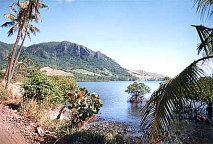
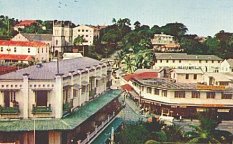
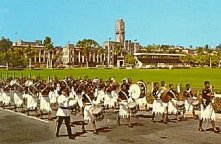
February 4: The Shaw set sail for Pago Pago on the Island
of Tutuila, American Samoa at 7:30 A.M. Also leaving the harbour were the
Gulf
Queen tanker, a flat top, and two freighters. The ships were accompanied
by two planes circling overhead and a squadron of SC (sub chaser) boats
looking for subs. The former governor of the island, "Yen" Hansen, a personal
friend back in Hawaii, had presented Ed with a tapa cloth that later was
hung on the Burroughs office wall. At 11:30 the convoy was ordered back
to Suva harbor because of a hurricane threat.
February 5: Ed went ashore for a haircut from an East Indian
tattooist/barber from Santa Barbara and later joined the Captain and company
at the hotel.
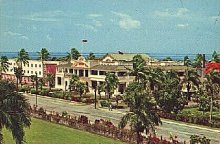
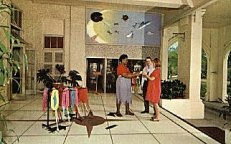
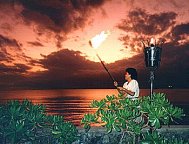
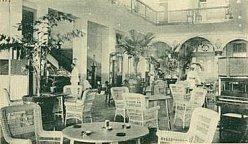
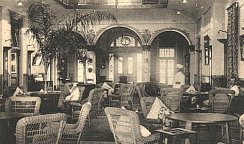 February 6: He watched a casual 9:30 crew inspection. Ed joined
the Captain and company at the hotel for drinks and supper.
February 6: He watched a casual 9:30 crew inspection. Ed joined
the Captain and company at the hotel for drinks and supper.
February 7 (Sunday): Ed climbed an iron ladder to board the
McKean for dinner followed by a trip ashore in the landing barge. Ed and
Ramey made a 30-mile sightseeing tour via taxi through hills, jungles and
villages. "They would have been a disappointment to Tarzan. We saw a young
girl getting a bath by the roadside. She was no child, and she was entirely
naked. Several natives were bathing her as she stood smiling as we passed
within a few feet of her. I was highly incensed. It was shocking,
the speed with which our driver drove past." The day ended with a bridge
game on board ship.
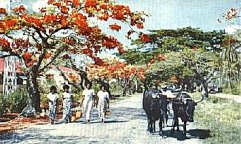
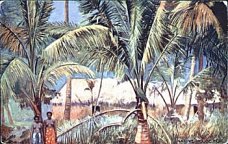
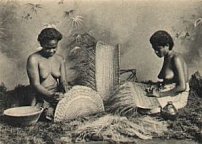 February 8: The Menominee reported seeing a periscope ten miles
south of Suva so the Shaw, McKean, the New Zealand corvette HMS
Viti and a New Zealand Hudson aircraft all moved out to search for
the sub. Unsuccessful in their search, all ships returned to port. The
rest of the day was spent in the hotel lounge and playing cards on ship.
February 8: The Menominee reported seeing a periscope ten miles
south of Suva so the Shaw, McKean, the New Zealand corvette HMS
Viti and a New Zealand Hudson aircraft all moved out to search for
the sub. Unsuccessful in their search, all ships returned to port. The
rest of the day was spent in the hotel lounge and playing cards on ship.

 February 9: This was a rainy, card-playing day that saw
the arrival of a troop transport. The expected hurricane never arrived.
February 9: This was a rainy, card-playing day that saw
the arrival of a troop transport. The expected hurricane never arrived.
February 10: The Shaw awaited orders. Ed ate at the
Petty Officer's mess, played bridge and went ashore to shop and to visit
the hotel lounge. He had trouble getting his purchases up the ship's rope
ladder, to the amusement of the crew.
February 11: Ed went ashore to watch a football game between
Deck Force and Gunners on the field by Government House. Among the players
were an All-American and other well-known players.
February 12: Orders came to leave on the 15th and to arrive
at Pearl around March 1. Ed started to have trouble sleeping - a result
of drinking Navy coffee round-the-clock.
February 13: A day of bridge and visits to the lounge. The
hotel finally ran out of Scotch.
February 14: Ed played cards all day and was unable to get
much sleep at night.
February 15: The Shaw and McKean sailed at
5:39 A.M. with a New Zealand patrol plane flying cover till 8. Ed was on
the bridge as they passsed scenic Kanavu Island and towering Mt. Washington
-- part of the Fiji chain of 250 islands. The battleship Mississippi
and the destroyer McCallaw had joined them from Nandi, the port
on the west end of Viti Levu. Following this they were joined by the damaged
Minneapolis,
the destroyers Reid and Cony and the tanker Gulf Queen
and finally turned east on the first leg to Pearl Harbor. The McCallaw
shot a line across the bow of the Shaw and delivered an aluminum
cylinder containing mail.
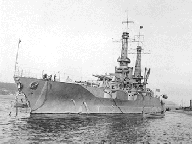
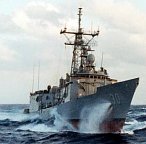
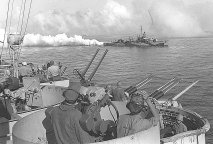 February 16: The Shaw crossed the International Dateline
and moved back into Monday the 15th.
February 16: The Shaw crossed the International Dateline
and moved back into Monday the 15th.
February 15: "...a lazy life: read, sleep, and play
cards."
February 16: The Shaw went through violent seas through
the night -- pitching and rolling. The heavy cruiser Portland was
sighted - limping back to Pearl after being torpedoed in the battle of
Santa Cruz.
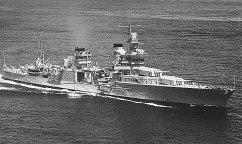 February 17: Sub contact was made at 7:00 AM following
General Quarters and at numerous times all morning. This resulted in periodic
frantic zigzagging in all directions and Ed making many runs up to the
bridge. They were about to drop depth charges when the lookout identified
the "sub" as a pool of porpoises.
February 17: Sub contact was made at 7:00 AM following
General Quarters and at numerous times all morning. This resulted in periodic
frantic zigzagging in all directions and Ed making many runs up to the
bridge. They were about to drop depth charges when the lookout identified
the "sub" as a pool of porpoises.
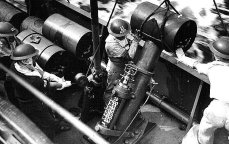 February 18: They arrived at Pago Pago, meeting the Portland
coming out of the harbour. The pilot boat brought out pilots who navigated
them through the mine field, past a big airfield to port with its grounded
barrage balloons, past Coconut Point and The Flower Pot, into the harbour
where they tied up alongside the Minneapolis at 10:30 A.M. Landing
barges from the McKean had to help Shaw in docking because
she was operating with only one screw. One of the divers inspecting the
condition of the near-derelict Shaw was drowned. Ed was shown the
sites by former correspondent Jonathan C. Rice, USMC after which he wrote
classified descriptions of the base that could be read by family after
the war in case he didn't make it to the end.
February 18: They arrived at Pago Pago, meeting the Portland
coming out of the harbour. The pilot boat brought out pilots who navigated
them through the mine field, past a big airfield to port with its grounded
barrage balloons, past Coconut Point and The Flower Pot, into the harbour
where they tied up alongside the Minneapolis at 10:30 A.M. Landing
barges from the McKean had to help Shaw in docking because
she was operating with only one screw. One of the divers inspecting the
condition of the near-derelict Shaw was drowned. Ed was shown the
sites by former correspondent Jonathan C. Rice, USMC after which he wrote
classified descriptions of the base that could be read by family after
the war in case he didn't make it to the end.
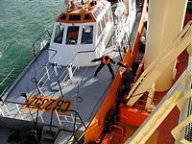
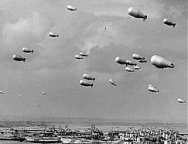 February 19: The McKean and Shaw left at dawn.
At 9:00 A.M. they went through a simulated dive bombing attack by four
Grumman Wildcats. Ed saw his first water spout and a hammerhead shark.
February 19: The McKean and Shaw left at dawn.
At 9:00 A.M. they went through a simulated dive bombing attack by four
Grumman Wildcats. Ed saw his first water spout and a hammerhead shark.
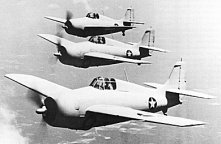
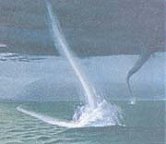
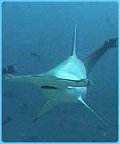 February 20: Ed wrote stories 23 and 24 in the ship's office
on one of their standard Underwoods -- a welcome change from his portable
unit.
February 20: Ed wrote stories 23 and 24 in the ship's office
on one of their standard Underwoods -- a welcome change from his portable
unit.
February 21: After writing story 25 on his portable
in the wardroom a terrific explosion emptied the room and plunged it into
darkness. Eventually he determined the cause to have been a depth
charge dropped after a sub contact had been made.
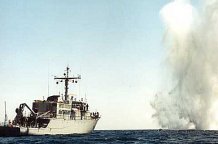 February 22: Ed got a haircut from a Filipino mess attendant.
Adverse currents had slowed the ship to seven knots. The crippled McKean
and Shaw were easy prey for any Jap attack.
February 22: Ed got a haircut from a Filipino mess attendant.
Adverse currents had slowed the ship to seven knots. The crippled McKean
and Shaw were easy prey for any Jap attack.
February 23: They crossed the equator at 9:26 P.M.
February 24: A day of depth charge attack warnings during
which Ed started to write a murder mystery containing 14 corpses.
February 24 - March 30: A comic detective story, "More Fun!
More People Killed!" (20,727 words) was begun aboard the USS Shaw and was
finished on shore.
February 25: The ships entered dangerous waters and were
joined by two PBYs and the destroyer Boggs from Palmyra for protection.
The McKean was fueled at cruising speed from the Mississippi.
A fifty foot boom from the battleship held the fuel pipe over the destroyer.
Pearl ETA: March 2.
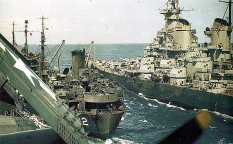 February 26: Ed observed all five ships firing at a towed target.
February 26: Ed observed all five ships firing at a towed target.
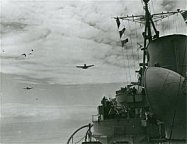
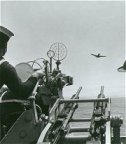
From the Hillman
HMCS Prince Robert Site
February 27: Following a morning sub alert the convoy took defensive
maneuvers. Depth charges from the destroyers killed hundreds of flying
fish and shook the Shaw violently. Sub alerts and Shaw depth
charge drops continued through the day.
February 28: "Jack's birthday - 30 years old. On Joan's birthday
I was in Noumea. On Hulbert's, in Honolulu. I should like to be in Chungking
on my next one. It is getting a little colder as we steam north."
March 1: Ed cured his shaky hands by giving up coffee.
March 2: Finally the Hawaiian Islands were silhouetted against
the dawn sky. The ships were escorted into harbour by patrol ships and
planes. They passed the sunken Oklahoma and Arizona
and docked at 9:00 A.M. Ed phoned Hully from the Officers Club. He had
been gone three months and had written 25 stories few of which had apparently
reached United Press. He received news that Joan and Jim Pierce had separated
and Jim had fled to Nogales, Mexico. Penniless Joan and the kids moved
to Bel-Air to live with mother Emma, who was a chronic alcoholic.
"Hully drove over to Pearl from Hickam and picked me up. And, gosh!
was I glad to see him!!"
~ Honolulu June 8 1943
March 20 - April 5: ERB wrote Diary #3.
April - June 8: ERB gives a detailed account of the trip
on the Shaw in a 60-page story, "The Diary of a Confused Old Man or
Buck Burroughs Rides Again."
END OF THE DIARY OF A CONFUSED MAN - BUCK
BURROUGHS Report
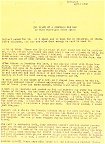
The entire actual journal pages are featured at:
www.erbzine.com/mag68/6800.html
April 4: Ed wrote a letter (unsent) to Senator Johnson which
is highly critical of the treatment he had received from the Navy - they
had refused to recognize his army or correspondent credentials. He went
on to recommend the unification of all the American forces into a single
United States Armed Force.
August 4: Caryl writes that she is attending the private
Marlborough School for Girls. She persists in using the last name Burroughs
- against her mother's wishes. She fought the adoption by Florence's new
husband, Dr. Chase.
Updates will be added to this timeline as more dates become available.


 .
WEBJED:
BILL HILLMAN .
.
WEBJED:
BILL HILLMAN .
Visit our thousands of other sites at:
BILL
AND SUE-ON HILLMAN ECLECTIC STUDIO
ERB
Text, ERB Images and Tarzan® are ©Edgar Rice Burroughs, Inc.-
All Rights Reserved.
All
Original Work ©1996-2003/2019 by Bill Hillman and/or Contributing
Authors/Owners
No
part of this web site may be reproduced without permission from the respective
owners.






























































































![]() .
WEBJED:
BILL HILLMAN .
.
WEBJED:
BILL HILLMAN .![]()